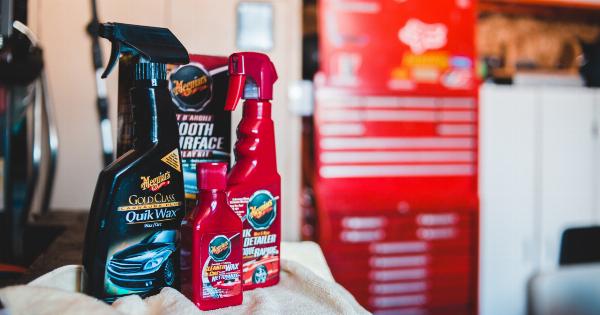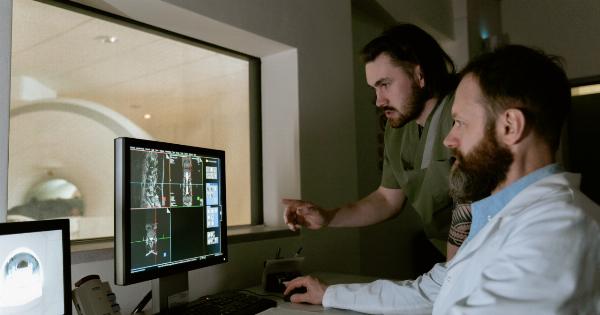As a parent, witnessing your child having a convulsion or seizure can be a frightening and overwhelming experience. Convulsions are uncontrolled and involuntary movements caused by abnormal electrical activity in the brain.
While seizures can vary in severity and duration, it is important to know how to handle the situation and provide the necessary support for your child. In this article, we will discuss helpful tips for parents dealing with convulsions to ensure the safety and well-being of their child.
Understanding Convulsions
Convulsions, also commonly known as seizures, can occur in children of different age groups and have various causes. It is crucial for parents to understand the different types of seizures and their potential triggers.
Some common types of seizures include:.
1. Generalized Tonic-Clonic Seizures (Grand Mal Seizures)
Generalized tonic-clonic seizures are characterized by a loss of consciousness, stiffening of the body (tonic phase), followed by jerking movements (clonic phase).
These seizures typically last for a few minutes and are often associated with a loud cry, tongue biting, and loss of bladder or bowel control.
2. Absence Seizures (Petit Mal Seizures)
Absence seizures are brief episodes of staring or lack of responsiveness that can last for a few seconds. Children experiencing absence seizures may appear dazed and unaware of their surroundings.
These seizures often go unnoticed or may be mistaken for daydreaming.
3. Febrile Seizures
Febrile seizures occur in young children, usually between the ages of 6 months and 5 years, and are triggered by a rapid rise in body temperature. These seizures are typically generalized and last for a few minutes.
Febrile seizures can be alarming for parents, but they are generally harmless and do not cause long-term effects.
4. Focal Seizures
Focal seizures, also known as partial seizures, originate from a specific part of the brain. These seizures can cause a range of symptoms depending on the area affected.
Symptoms may include unusual sensations, twitching or jerking of specific body parts, changes in mood or behavior, and altered consciousness.
What to Do During a Seizure
It is essential for parents to know how to respond when their child is having a convulsion. Here are some important steps to follow during a seizure:.
1. Stay Calm and Reassuring
It is natural to feel panicked or scared during your child’s seizure, but it is crucial to stay calm. Your child may be frightened as well, and your calm demeanor can provide them with a sense of security.
Remember that most seizures are not life-threatening and will end on their own.
2. Keep Your Child Safe
During a seizure, it is essential to ensure your child’s safety. Gently guide them to the floor if possible, away from any sharp objects or furniture that could cause injury. Place a soft cushion or pillow under their head to prevent head injury.
3. Do Not Restrain or Hold Your Child Down
Avoid restraining your child or trying to hold them down during a convulsion. It can potentially cause harm or injury to both you and your child. Allow the seizure to run its course, keeping a close eye on their movements to ensure their safety.
4. Time the Duration of the Seizure
Keeping track of the seizure duration can help medical professionals evaluate its seriousness and provide appropriate treatment if necessary. Note the start time and observe the different phases and movements your child experiences during the seizure.
5. Protect Your Child’s Airway
It is crucial to ensure your child’s airway remains open during a seizure. Avoid placing any objects, including your fingers, inside their mouth.
Contrary to popular belief, it is highly unlikely for a person to swallow their tongue during a seizure. However, the jaw may clench or tense up, potentially causing difficulties in breathing.
6. Do Not Administer Anything Via Mouth
It is important not to force any food, drink, or medications into your child’s mouth during a seizure. They may not be able to swallow or could choke on the substance.
Wait until the seizure is over and your child is fully conscious before offering them anything to eat or drink.
When to Seek Medical Help
Most seizures end on their own and do not require immediate medical intervention. However, there are certain situations in which you should seek medical help:.
1. If the Seizure Lasts Longer Than Five Minutes
Prolonged seizures, lasting longer than five minutes, are known as status epilepticus and require immediate medical attention. These seizures can be life-threatening and may require emergency treatment to stop the convulsions.
2. If the Child Has Difficulty Breathing
If your child experiences breathing difficulties during or after a seizure, seek medical help immediately. This could indicate a more severe underlying condition or potential complications.
3. If Another Seizure Occurs Shortly After the First
Multiple seizures occurring in close succession, without the child fully regaining consciousness in between, require medical evaluation. This could be a sign of a serious medical condition that needs immediate attention.
4. If the Child Is Injured During the Seizure
In case your child sustains an injury during a seizure, especially a head injury, it is important to seek medical assistance. Head injuries can have serious consequences, and it is necessary to have them evaluated by a healthcare professional.
Creating a Safe Environment
While it may not be possible to prevent every convulsion, you can take steps to create a safe environment for your child. Here are some guidelines:.
1. Remove Potential Hazards
Regularly inspect and childproof your home to remove any potential hazards. Secure heavy furniture to the wall to prevent tipping, cover sharp corners, and keep small objects out of reach to minimize the risk of injuries during convulsions.
2. Use Seizure Alert Devices
Seizure alert devices are designed to notify caregivers when a seizure occurs. These devices can provide an added layer of safety and allow for timely intervention.
Discuss with your child’s healthcare provider about the suitability and availability of seizure alert devices.
3. Educate Caregivers and School Staff
Inform other caregivers, such as family members, babysitters, and school staff, about your child’s condition and how to respond during a seizure.
Provide them with clear instructions on what to do and any necessary emergency contacts or medications.
4. Encourage Healthy Habits
Maintaining your child’s overall well-being can help reduce the frequency and severity of convulsions. Ensure your child gets enough sleep, eats a balanced diet, and stays properly hydrated.
Following a medication regimen, if prescribed, is also crucial for seizure management.
Supporting Your Child’s Emotional Well-being
Convulsions can have a significant impact on a child’s emotional well-being. It is important for parents to provide support and understanding to help their child cope. Here are some ways to support your child:.
1. Communicate Openly
Encourage your child to express their feelings and fears about their condition. Maintain open and honest communication, addressing any concerns they may have. Assure them that having a seizure does not define who they are.
2. Educate Your Child
Provide age-appropriate information about convulsions so that your child can better understand their condition. Explain what happens during a seizure, what triggers it, and what measures can help manage and prevent convulsions.
3. Build a Support Network
Connect with support groups or organizations specializing in epilepsy or seizure disorders. These communities can provide valuable resources and a supportive environment for both parents and children.
Sharing experiences with others who have similar challenges can be comforting.
4. Promote Independence
Encourage your child to become self-reliant and take appropriate precautions to ensure their safety during convulsions.
Teach them how to seek help when needed, recognize their triggers, and explain their condition to others who may not be familiar with it.
Dealing with convulsions as a parent may initially seem overwhelming, but with knowledge, preparation, and support, you can ensure the well-being and safety of your child.
Arming yourself with the information provided in this article will empower you to handle convulsions with confidence and provide valuable care for your child’s overall health.





























